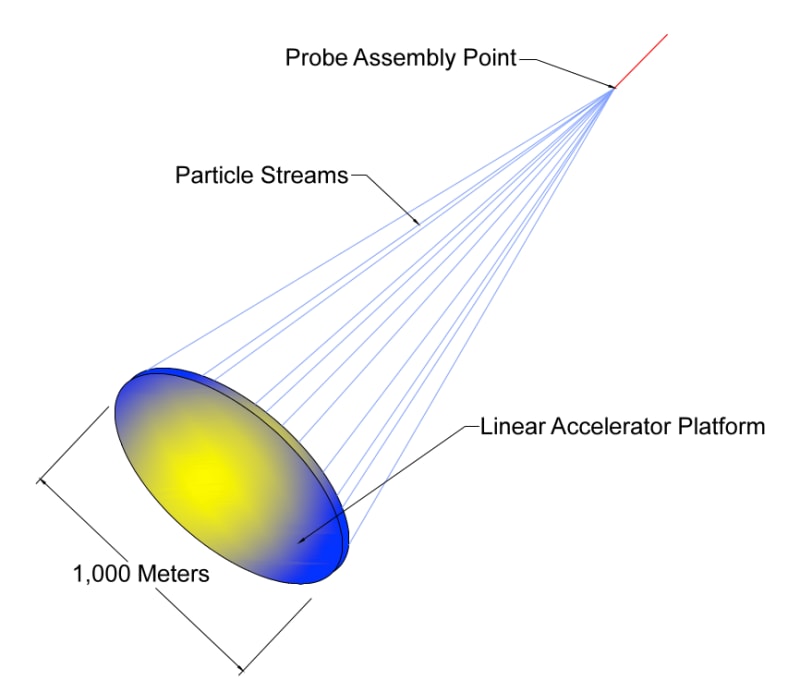High Velocity Interstellar Probes
Travel to other stars is expected to take centuries unless we discover a faster-than-light technology, which NASA is currently exploring. An alternative is to send small probes at near the speed of light (c). Current methods for accelerating a small mass to near c include rockets or linear accelerators. Rockets require almost all of the accelerated mass to be fuel, which then requires more fuel to accelerate. Linear accelerators are limited in length and thus require large, crushing forces concentrated on the small probe in a very short period of time, thus destroying the probe.
Space probes of a kilogram or less can be assembled in space and at velocities near c. This can be accomplished by “3D printing” the probe from fast moving particles. A large array of particle accelerators produce a stream of ions, which converge at a point in space and at a velocity near c. The “printed” probe continues to a distant star, where it transmits images and data back to Earth. With enough fuel, probes can be printed continuously, each only needing to survey a small area with the images/data stitched together back at NASA. A large number of probes would produce a synthetic aperture capable of large, high resolution images.
This approach is derived from recent advances in 3D printing and vacuum deposition with sintering methods using lasers and electron beams to produce other complex materials. The printing of integrated circuits, energy storage structures and radio frequency transmitters are on the horizon.
A kilometer-diameter array of linear accelerators will be assembled in local space. Particles can reach velocities of 0.9 c in the first meter or two of the array's thickness. At the initiation of a probe assembly sequence, streams of ions are emitted from thousands of accelerators at, say, 0.8 c. The ions converge at a point in space, traveling at the 0.8 c. The accelerators continue to emit ion streams toward the target (probe) at a rate and composition necessary to produce the components of the probe. As the ion streams continue, the accelerators emit ions with greater velocities. The latter ions catch up to the earlier ions increasing the probes final velocity past 0.9 c. Additional probe production will only be limited by the available fuel, which is about three Space Shuttles capacity per each one-kilogram probe.
If our interstellar probe has a final velocity of 0.9 c, and we ignore any relativistic effects, it should arrive at Alpha Centauri in 4.72 years. The data and imagery should be back to NASA in another 4.25 years. Total time from launch is less than ten years to get our first closeup views of our next-nearest star. During this ten year span the accelerator array would continue to produce probes aimed at other stars and their planets. It wouldn't be that long before we have “street views” of all our neighboring stars and their planets.
Like this entry?
-
About the Entrant
- Name:Carl Lawrence
- Type of entry:individual
- Software used for this entry:Autocad
- Patent status:none

